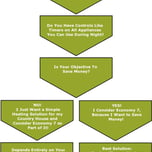- GreenMatch
- Blog
- 6 Ways Food Damages Environment
6 Ways Food Damages Our Environment
'You are what you eat', people say. The food in our refrigerator not only determines our health but also influences the environment in various ways.
Agriculture accounts for 24% of greenhouse gas emissions worldwide and has been a major reason of deforestation in Latin America. Cultivating crops requires vast land, a huge amount of water, and a substantial amount of chemicals that leads to water pollution. Livestock like cow and sheep is one of the key sources of greenhouse gas emissions, generating 9% of human-caused CO2 emission, of which 37% is methane and 65% is nitrogen oxide.
However, while people are recycling the plastics, switching their cars to hybrid ones, and purchasing degradable furniture, it seems that we have neglected the fact that food on your plate may have created a larger ecological footprint than your car.
Similar to calculating the calories when getting fit, the calculation of the water and carbon footprint of your daily meal is not simple. With the rising concern about the environment, 3.5 million Brits, which is 7% of the population, chose to eat only vegetables in 2017.
Some believe that saying a definite ‘no’ to meat can make a significant difference to our planet, but this is not all black and white. What are some actionable tips and scientifically proven ways to improve our eating habits? With this curiosity and concern in mind, GreenMatch has conducted research on the topic and visualised it in the following infographic.

If you would like to use this infographic on your website, use the embed code below:
When it comes to doing good for the environment, there are various ways to make a change. Giving a second thought on what we purchase when shopping for groceries is one of the simplest and most effective moves.
We strive to connect our customers with the right product and supplier. Would you like to be part of GreenMatch?




